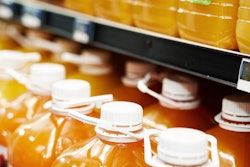
Disruptions in supply chains, crop damage resulting from climate change, and a shift in consumer attitudes toward drinking are set to shape new trends and consumption habits in spirits and wine over the coming years, supporting steady growth. That’s according to GlobalData, which says it expects the market to increase at a CAGR of 1.2% by 2026.
Says Holly Inglis, Beverages Analyst at GlobalData, “Health consciousness and sustainability, sprinkled with a pinch of indulgence, are set to drive many innovations this year, as consumers look for products that align with their personal values without compromising on taste. In GlobalData’s Q2-21 consumer survey, 34% of global consumers stated they find sustainably/ethically sourced ingredients very appealing, highlighting an innovation opportunity for beverage producers.”
According to Inglis, five trends will shape the spirits and wine sector over 2021/2022.
1. Low/No ABV [alcohol by volume]: “Already established in the beer sector, low or no ABV are now taking shape in spirits and wine,” Inglis says. “Although hard seltzers benefited from this trend recently, Boston Beer reported that hard seltzer growth diminished, meaning the company had to revise its full-year growth forecasts—perhaps suggesting a slowdown in the previously booming category. That said, ‘moderation’ is still a winning trend, as consumers look for lower/no-ABV variations of their favorite drinks. Innovations witnessed so far in 2021 have included Street Hard Seltzer in Russia, Desperado’s virgin 0.0% mojito beer in France, and Svami Zero Proof non-alcoholic pink gin and tonic in India.”
 | Read this story on Pelee Island Winery's sustainable aluminum bottle can. |
2. CBD infusion: “Two companies have recently leveraged experimental and health trends in one unique launch. Spirits producer Amass has recently paired THC- and CBD-infused with zero-ABV spirit, highlighting a modern take on what was once considered a taboo,” Inglis shares. “In Poland, CBD beer launches from Browar Miejski Gloger Sp. Z o. O have also been witnessed, though in GlobalData’s Q2-21 consumer survey, only 15% of global consumers stated that novel/unusual flavors were opted for in alcoholic drinks, positioning this as more of an emerging trend.”
3. Better-for-you wine: “Consumers are increasingly demanding sustainable and healthier alternatives to traditional products, and often this is achieved via certifications such as organic,” Inglis says. “Regarding wine, this refers to organic, biodynamic, or sustainable, all of which have their own certification boards and regulations. GlobalData’s Q3-21 survey reveals that 55% and 40% of global consumers find natural and organic claims to be very appealing, respectively. In Chile, the Miguel Torres Las Mulas brand launched an organic sparkling wine, appealing to eco-conscious consumers, though launches of this nature also connote a premium.”
4. Hard tea: “Following the immense success of hard seltzers, manufacturers are now looking to new cross-category innovations,” Inglis explains. “Hard tea leverages a popular non-alcoholic beverage choice—with a twist. Producers are able to combine novel alcoholic blends with a tea base to create a unique offering, which is likely to appeal to younger consumers. Take Bully Boy’s Italian Iced Tea brand, which combines Aperol [an Italian bitters apéritif] spritz tastes with iced/RTD tea flavors, with a 7% ABV content.”
 | Read this story on "Beverage Trends Driving Change in 2021" |
5. Portion-control cans: “The can format primarily came into play as part of the on-the-go trend. However, since the pandemic and subsequent slowdown of many people’s lives, canned wines and spirits have co-opted a different space—that of portion control. Cans provide an accessible and affordable way to both count calories and consumption of alcohol units,” Inglis says. “In GlobalData’s Q2-21 survey, 33% of global consumers stated that they are actively trying to reduce their consumption of calories, with a further 38% highlighting they are trying to reduce sugar consumption. This denotes not only a move away from high-ABV count, but other less-than-healthy ingredients too.”























